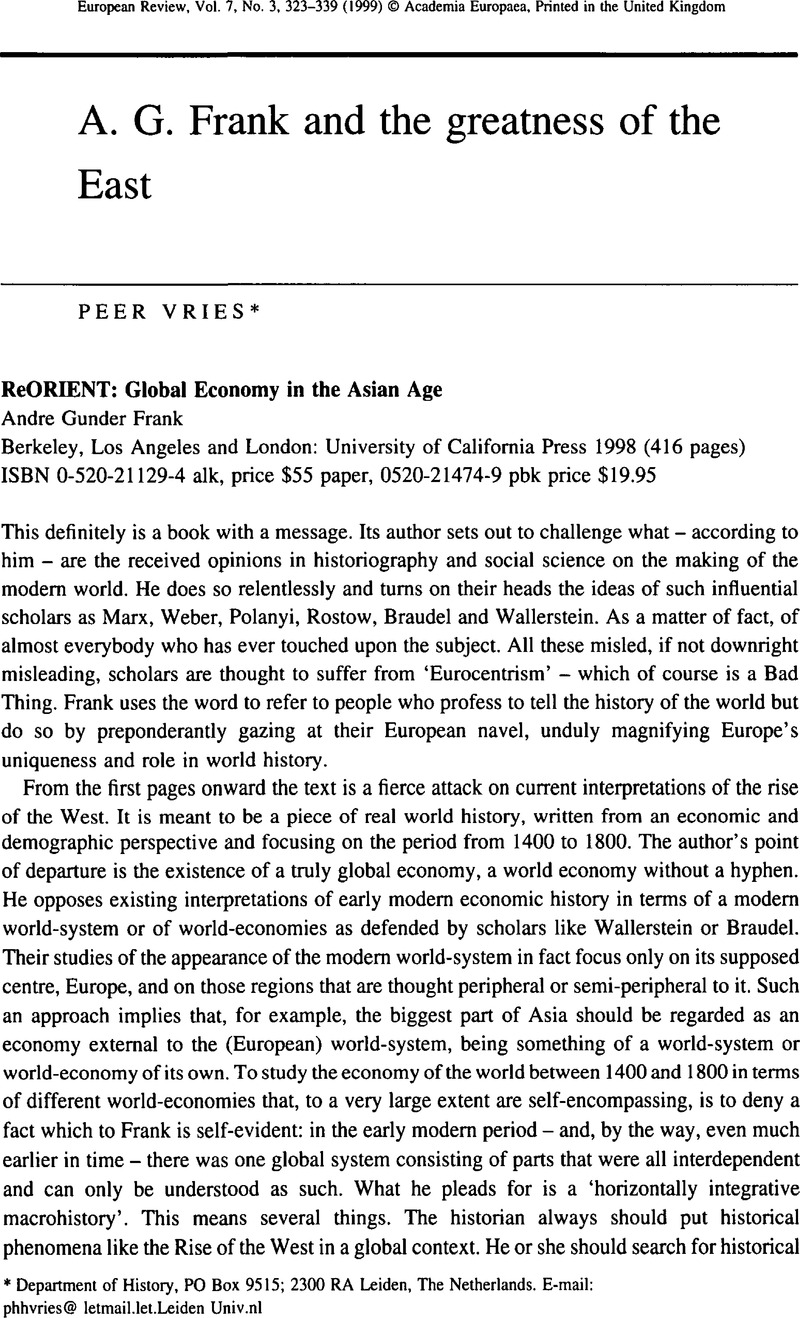29. To give only a few examples. Cohen in his book on the Scientific Revolution does not explicitly reject the use of the concept ‘Scientific Revolution’ as Frank wants his readers to believe. See Cohen,
The Scientific Revolution, 500–501. Compare Frank,
ReORIENT, 192. Cohen nowhere suggests, as again Frank wants his readers to believe, that there would be a direct relationship between the ‘Scientific Revolution’ and the Industrial Revolution. See, for example, Cohen,
The Scientific Revolution, 195, 427–428. Cohen's book is about the Scientific Revolution not about the industrial one. Compare Frank
ReORIENT, 188–192. The fundamental thesis of Braudel's trilogy
Civilisation matérielle, économie et capitalisme is that
only in Europe ‘… la construction (of capitalism.) réussit.’ See part two of the trilogy',
Le jeux de l'échange, 519. Frank passes this over and only quotes Braudel as somebody who can be brought in line with his thesis that there were no significant institutional differences between Europe and Asia. See Frank,
ReORIENT, 213–214. Bairoch is quoted with approval when he compares GNP per capita in various civilizations at the end of the early modern period and concludes there was something of an economic parity, but when he claims intercontinental trade accounted for only a small part of European GNP at this same moment in time – as you will remember income from trade is part of GNP – his calculations are dismissed out of hand. Compare Frank,
ReORIENT, 171–174 with 41–42 and 295–296. I would be surprised if, for example, Goldstone, Wong or Elvin would fully agree with the way their work is interpreted
and fitted into Frank's thesis. See, for example, notes 2, 13, 21, 24 of this article.
Google Scholar 